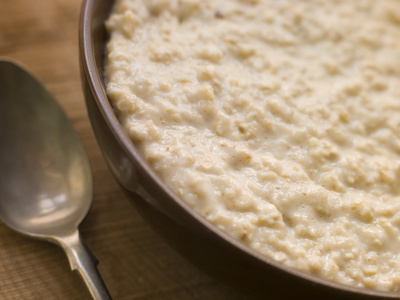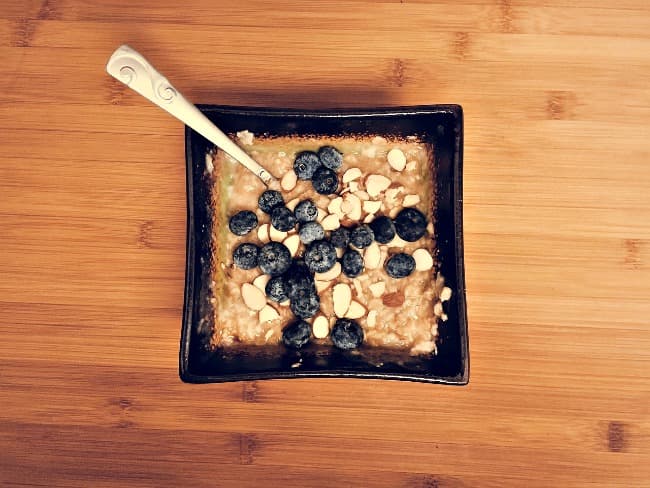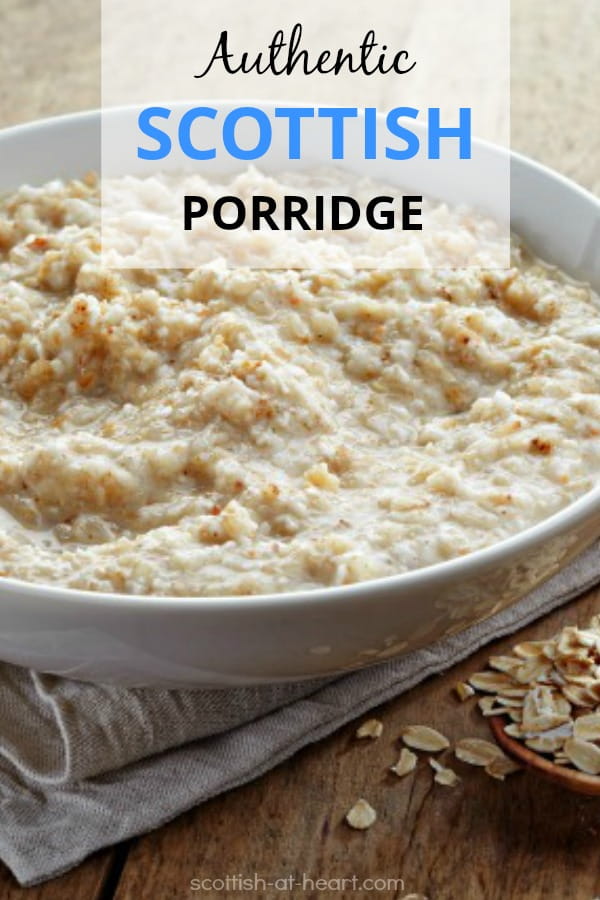Authentic Scottish Porridge Recipe
Use this delicious porridge recipe to bring a taste of authentic Scottish porridge to your breakfast table!
The Scots have been enjoying their porridge for centuries, and rightly so.
Made from oats (which are one of the few grains that grow well in Scotlands' climate), Scottish porridge is tasty AND nutritious, and is packed full of fiber, vitamins and minerals.
As part of a healthy diet, it's a great way to help reduce cholesterol, and the slow-release carbs mean it keeps you full (and full of energy) until lunchtime.
Historically there are a few traditions and superstitions connected with the making, and eating, of this dish in Scotland.
Scottish Porridge Trivia....
- Traditionally, porridge is stirred with a wooden rod called a 'Spirtle' or 'Spurtle', which looks a bit like a drumstick (not the chicken variety!).
- Superstition has it that Scottish porridge should always be stirred clockwise - and preferably with your right hand - otherwise the Devil will come for the person doing the stirring!
- Porridge is traditionally served in wooden bowls, and eaten standing up. Each spoonful should be dipped in a bowl of cream that's shared by everyone at the table. These Acacia wood bowls would work nicely for your porridge.
- Porridge could well have been the worlds' first 'take-out'. Centuries ago, an authentic porridge recipe such as this one would be used to cook up a big pot and what wasn't eaten for breakfast would be poured into 'drawers' or another container and allowed to cool. Once it was cooled, the porridge could be cut up into slices or blocks, wrapped, and taken along on the days' work to be eaten for lunch, dinner or a snack!
The humble porridge has even been immortalized in print!
The famous Scottish Bard, Robert Burns described it this way...
'But now the supper crowns their simple board,
The halesome parritch, chief of Scotias' food.'
The most important ingredient in this porridge recipe is the oats themselves. Pin Head, steel-cut oats are the best choice, followed by premium quality rolled oats.
The more processed or 'quick cook' oats don't make for a porridge of the same quality, but are quick and simple to use if you're in a big hurry.
See the two types of traditional oats that are of superior quality here.
Ingredients:
The ingredients of an authentic Scottish porridge recipe are ridiculously simple :)
I've included the original British Imperial measurements that my nana (she was the recipe Queen in our home) used, and then converted those to the current British metric system.
If you're in the USA you'll also find the US measurement equivalents listed below.
British Measurements - Imperial/Metric
- 4.5 oz (100g) Pinhead Oatmeal
- 1 1/2 Pints Water (milk or a milk/water mix can be used if you prefer)
- Generous pinch of salt
US Measurements - Cups
- 1 1/2 Cups Pinhead Oatmeal
- 3 Cups Water (or alternatives as above)
- Generous pinch of salt

Directions
Put water in heavy bottomed pan and bring to the boil on high heat.
Reduce to medium heat and sprinkle oats on top and stir into water - (doing it this way helps reduce the risk of your porridge getting lumpy).
The annual 'World Porridge Making Championships' are held in Carrbridge, Inverness-shire, Scotland in October each year, and contestants come from all over the world to enter.
The World Porridge Making Champion title is awarded for the best porridge made only using oatmeal, water and salt. There's also a Specialty award for the best porridge which has other ingredients added.
Interestingly it was an American, Matthew Cox from Oregon, USA, whose porridge recipe won the 2009 Competition!
The most recent Championship Title (2018) was a joint win between Per Carlsson and Calle Myrsell.
Find out more about this annual contest at www.goldenspurtle.com
As most
people don't have a Spirtle, using a wooden spoon works just fine!
Bring back to the boil over medium heat, stirring continuously.
Then reduce to low heat, cover with lid and let simmer for around 20 - 30 minutes. Add salt and stir into porridge about half-way through.
And don't forget to stir the porridge every few minutes to stop it sticking and prevent lumps.
Although tradition says only stir clockwise, stirring in both directions does have advantages in the 'de-lumping' process.
In this porridge recipe, the cooking time can be varied a bit, depending on how thick and creamy you want your porridge to be.
Shorter cooking time will make for a thinner porridge with a more chewy texture. Longer cooking will make a thicker, creamier dish.
Don't overdo it though, or you'll end up with a very 'stodgy' meal.
I like my
porridge thin enough that it pours slowly from the pan, but definitely not
watery or 'gruel' like.
You can sprinkle a little more salt on top if you like (and you don't have high blood pressure or a controlled diet).
Then either pour cold milk, or cream, on top to taste.
If you want the whole Scottish experience, try pouring cream into a separate bowl and dip your spoonfuls of porridge into it one at a time. It'll take longer that way, but is really good!

Porridge-making Tips
Here are a couple more tips that will help you get your porridge just right...
- Porridge has a tendency to become 'lumpy' very easily, make sure that you stir often enough, and thoroughly enough to prevent that
- Adding the salt too early (some recipes suggest putting all the ingredients in the pot at the same time) can make the oats hard/tough
- A heavy stainless-steel pot would be my first choice, but a good quality non-stick is okay if that's all you have
Here are two brands of oats that I think are among the best.
Hamlyn's Pinhead Oatmeal - produced by the sponsors of the World Porridge Making Championships.
Bob's Red Mill Steel Cut Oats - produced by the company owned by the 2009 winner of this contest, Matthew Cox.
you might also like:
- Scottish fruit bread
- Scottish tablet
- Scottish Coburg cakes
- Scottish shortbread
- Traditional Empire biscuits
- Home
- Scottish Recipes
- Scottish Porridge Recipe
